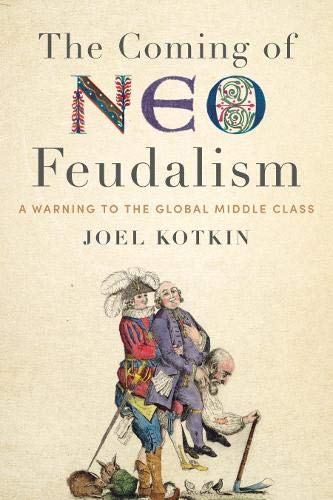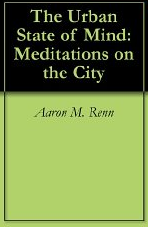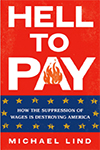
The greatest threat to the United States is self-created and centered in urban areas. Having survived the pandemic and the 2020 “summer of love”, America’s cities — most critically, New York — are adopting politics that seem designed to make the much-feared “urban doom loop” a reality.
Instead of facing up to their fundamental challenges in liveability and economic viability, the Big Apple and other cities such as Portland, Seattle, San Francisco, Los Angeles, Minneapolis, and Chicago are falling for full-spectrum progressives. In Tuesday’s local elections, Zohran Mamdani, a socialist running as a Democrat, handily defeated former Gov. Andrew Cuomo, who ran independently after failing to secure the Democratic nomination. Leftist have also scored recent victories in the smaller cities of Oakland, Cincinnati, Syracuse, Albany, and Buffalo.
It’s hard to see how politicians like Mamdani, following the Democratic Socialists’ platform, will abolish capitalism or implement the “social ownership” of all industry in a still profoundly capitalist country. People, at least outside the bluest cities, may not respond well to progressive ideas about taxing “white” areas, one of Mamdani’s proposals, or regarding the very existence of the NYPD as an obstacle to “queer liberation”.
His defenders insist Mamdani has disavowed such views since he aired them in the febrile Covid-and-BLM era. But his statements from back then, which wasn’t that long ago, give every impression of sincerity; Mamdani — unlike, say, his failed opponent Andrew Cuomo — comes across as an ideological true believer if ever there were one.
The bigger problem is that this abrupt Left turn comes as cities are losing their primacy. Today, core cities account for just 15% of the US population, down from a quarter in 1950. Meanwhile, the suburbs and exurbs have seen explosive growth — accounting for 86% of the metropolitan population, up from 13% at the outset of World War II. Suburban and, especially, exurban dominance of metropolitan growth has only accelerated in recent years.
More critical still, cities are losing their once-dominant economic role. In 2019, before the pandemic, office construction was a third of the rate of 1985 and half that of 2000. Even large multinational firms, historically anchored in cities like New York and Chicago, are rethinking their real-estate strategies. According to the Financial Times, many companies are planning to reduce their office footprints by 10% to 20%. A study from the University of Chicago found that as much as a third of the urban workforce could operate remotely.
It is precisely these conditions that have helped create a new urban demography favourable to far-Left city politicians like Mamdani. Between 1970 and 2000, notes the Brookings Institution, middle-income areas in core cities dropped 23%, down from nearly half, while the majority lived in low- or very-low-income areas. Job losses in manufacturing and middle management, notes MIT economist David Autor, were “overwhelmingly concentrated in urban labor markets”.
The Big Apple, for example, has lost some 76,000 middle-income jobs since 2020, while upper-income and low-income jobs have grown. This has paralleled the exodus of middle- and working-class ethnics — Italians, Irish, Jews, African Americans, Puerto Ricans — into the suburbs, particularly those with lower prices. Their departure is a blessing for the professional-class Left that backs Mamdani (while remaining middle- and working-class voters largely continued to back Cuomo to the bitter end).
Burdened with astronomical college debt, these high-education-but-low-wage voters constitute the vanguard of the far Left in many cities. They have largely adopted radical positions hostile to Israel and are seen as threatening to Jews, especially older ones, who once played a dominant role in the city politics.
Onetime rapper and Hollywood nepo baby Mamdani knows well how to appeal to this emergent class. His high-priced proposals for free childcare may seem family-friendly, but many of these voters are unliikely to have children (a majority of Manhattanites are single and have never been married). Socialist campaigners thrive in those places that have far fewer children — gentrified sectors of Queens and Brooklyn, Chicago’s near northside and trendy swaths of west LA. Those who march under the banner of LGBTQ also play an outsized role in these movements. Mamdani, despite his Muslim background and pro-Palestinian bona fides, romped in heavily gay-friendly parts of Manhattan, Brooklyn, and Queens
What disturbs the young professional class most appears to be high rents; Gotham takes the highest share of income for housing of any US big city. Mamdani’s programs — rent freezes, free buses, eviction restrictions, and the like — are designed to allow urbanites without the means to remain in the city, rather than join those moving to less costly cities to fulfill their dreams.
Some Leftist pundits see this class-based approach as the path to power, and even as the better substitute for the identity-based politics that dominated progressivism beginning a decade ago. High prices mean that coastal metropolises now suffer the lowest adjusted incomes, even as incomes in the less costly middle of the country remain above the national average. The thinking goes that, by running on “affordability” for this educated precariat, Democrats can regain their electoral footing after the thrashing they received in 2024.
Other economic pressures are radicalising the hipsters. They face a job market that is getting tougher — barely half of workers under 30 have full time jobs — even for those with expensive advanced degrees. Their jobs are increasingly threatened by the rise of artificial intelligence, including in finance, business services, and even “creative” professions that historically have clustered in cities.
Cities, of course, can fight back against these trends by developing policies that encourage urban economic growth, something barely mentioned in the DSA and other Leftist forums. Through reasonable taxation, less regulation, and the nurturing of local high-wage industries, from light manufacturing to video production, an early generation of practically minded urbanists helped restore order and growth. Mayors Rudy Giuliani and Michael Bloomberg in New York, Bob Lanier and Bill White in Houston, Richard Riordan in Los Angeles, Ed Rendell in Philadelphia and Steve Goldsmith in Indianapolis showed how cities can come back.
“High-education-but-low-wage voters constitute the vanguard of the far Left in many cities.”
Today’s urban politics, at least for now, make such a revival unlikely. Chicago’s Brandon Johnson, in office since 2023, was elected by a very Mamdani-like coalition of poor minorities, public employees, and hipster whites. Under Johnson’s steady misrule, schools deteriorate even as he pushes through big raises for teachers and other public employees, leaving the city with an extremely high pension debt.
Even where reformers have triumphed this decade, as in San Francisco and Seattle, radical forces appear to be once again ascendant. Long a favoured destination for college-educated migrants, Seattle during the 2020 riots shut down for weeks and even spawned something of a mini-Havana near its downtown. The city suffers from stubbornly high office-vacancy rates, large numbers of empty stores, and business flight. Crime is down, but hardly back to its pre-2020 levels. The George Floyd Plaza, meant to be some sort of public shrine, remains largely desolate and threatening.
In Portland, another city still reeling from the effects of 2020, socialists are also ascendant, having displaced Republicans as the city’s essential second party, and one with all the momentum. As in Seattle, the local progressives seemed reluctant to police even violence-prone groups like antifa.
Just recently, New York Times veteran Nicholas Kristoff blithely dismissed Trumpian assertions about Portland as a crime-cursed dystopia, suggesting that “hell does not serve Pinot Noir this good”. Of course, not everyone in these cities loves the helmeted kids in black, notably those who have suffered their attacks, including the Seattle police union.
Much the same process appears to be taking place in Minneapolis, which suffered massive disorder during the “summer of love”. There, Mayor Jacob Frey, after eight years, is deeply unpopular and could lose out to his socialist challenger, Omar Fateh. The race was too close to call as of this writing.
Radical realignment is also unfolding in San Francisco, where since 2020, the city had tacked to the center. Once united in opposition to the progressives, the moderates are now increasingly divided. Now the city’s Board of Supervisors may have a DSA majority within a year or two.
President Trump deserves some blame for the socialist tide. He may well have saved the career of Los Angeles Mayor Karen Bass, who impressed few during last year’s fires and continues to disappoint, as the city’s performance in rebuilding has been abysmal at best. Its economy may be largely moribund, losing companies at a rapid clip. But Bass’s fervent attacks on ICE agents have helped her galvanize progressive support.
Is this the denouement of great cities? Even under socialist rule, big cities like New York will continue to attract young professionals, globe-trotting elites, and cultural creators, as well as some immigrants. In New York, while the overall population has declined, ultra-wealthy residents, boosted by the stock market, continue to spend lavishly at the city’s often absurdly expensive restaurants. Similarly, tourists continue to flood in, gawking at the bright lights, street characters, and remarkable cultural assets built by earlier generations.
Yet over time, socialist rule may make it impossible for big cities to finance their current costs, much less elaborate schemes for redistribution. Trump and the congressional GOP are unlikely to give much help with mass transit or to fund new city services. And there remain definite limits to what the rich — notably, those who earn and not just inherit their wealth — will absorb in terms of taxes and public humiliation.
It’s hard to see how cities like New York can expand spending without keeping these people. Between 2011 and 2021, New Yorkers with more than $1 million in adjusted gross income averaged 0.7% of all tax filers, but paid 42.4% of municipal personal Income Tax. Between 2018 and 2022, the city lost some $10 billion in revenues just to south Florida. Even Andrew Cuomo vowed to head to the Sunshine State in case he lost, which, he did.
On the other hand, socialist wins could prove a boon for places like Palm Beach, Fla., which have become beacons for people leaving places like New York and Chicago. Dallas is developing a stock exchange to rival Wall Street and is eyeing a Mamdani mayoralty as an ideal marketing device.
Some conservatives might celebrate the radicalisation of cities and salivate at the prospect of hard-Left control of the Democratic Party. But they ignore the underlying forces boosting socialism, notably the cost of living and diminished employment prospects for the young, which could also spread beyond the radical cities. Rather than a boon to conservatives, the rise of the radical city constitutes a loss for the country, and can be reversed only by a rebirth of pragmatic reason.
This piece first appeared at: UnHerd.
Joel Kotkin is the author of The Coming of Neo-Feudalism: A Warning to the Global Middle Class. He is the Roger Hobbs Presidential Fellow in Urban Futures at Chapman University and and directs the Center for Demographics and Policy there. He is Senior Research Fellow at the Civitas Institute at the University of Texas in Austin. Learn more at joelkotkin.com and follow him on Twitter @joelkotkin.
Photo: Marco Verch via, Flickr, under CC 2.0 License.












